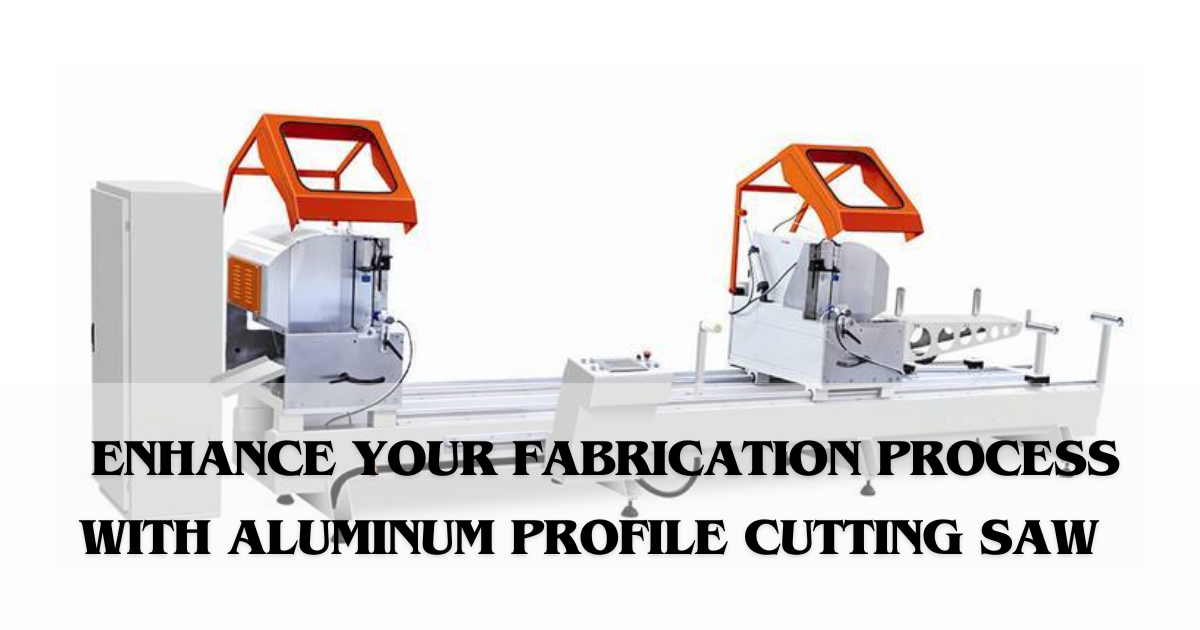
Industries, including construction and automotive, along with aerospace and furniture manufacturing, use aluminum profiles as an essential component. The effective and exact cutting operations of aluminum profiles remains essential for achieving both supreme fabrication quality and operational optimization. Aluminum profile cutting saws represent a highly effective tool in the manufacturing process. The following article investigates aluminum profile cutting saw optimization through saw selection and operational technique refinement coupled with safety implementation.
Starting the process of fabrication improvement begins with selecting the right aluminum profile cutting saw. The following factors should be considered:
There are several types of saws available for aluminum cutting, including:
Miter Saws: Miter saws provide accurate angle cuts which find regular usage during window and door frame production.
Circular Saws: Best for straight cuts and high-speed operations.
Band Saws: A band saw is ideal for working with complex forms along with hard-to-cut shapes.
Cold Saws: Cold saw technology features cooling mechanisms which minimize heat production and produces cleaner cuts while extending blade lifespan.
Blade selection remains essential because it determines both the precision and cleanliness of your cutting results. Consider the following blade features:
Material: Aluminum requires carbide-tipped blades because they maintain their sharpness along with excellent durability.
Tooth Count: The number of teeth on blades determines both finishing quality and cutting speed between tools.
Coatings: Teflon and titanium special coatings help reduce friction while stopping material accumulation.
Choosing a renown brand is also essential. In steel fabrication machines a China aluminum profile cutting saw is widely preferred in the industry for its precision
Spray lubricant onto the saw blade contact points before working with aluminum profiles to ensure that the cutting saw delivers enough power for cutting the material. Speed settings that can be adjusted create better control and improved performance when dealing with a range of profile types.
Secure aluminum profiles on stability systems provided by clamps or fixtures to stop them from moving when cutting.
For longer profiles, maintain stability and achieve precise cuts through the use of roller supports.
Aluminum grade and profile thickness will determine your choice of cutting speed and feed rate settings. When precision is necessary users should operate at a slow speed together with consistent feed until they are ready to transition to higher speeds for thinner materials.
Applying the correct lubricants and coolants to aluminum reduces friction while preventing overheating and delivers burr-free cuts. Choose a coolant material that works with aluminum while assuring it will not damage the metal.
Precise measurements of the profiles must occur before processing begins.
Operations require two rounds of checking to lower manufacturing mistakes and excess material waste.
A thorough cleaning operation removes debris and coatings which might interfere with the cutting procedure from the aluminum surface.
The integration of automated systems into aluminum profile-cutting operations leads to substantial process acceleration with precise execution. Consider the following automation options:
CNC Cutting Saws: Precise and repeatable cutting operations can be performed through Computer Numerical Control (CNC) cutting saws requiring minimal operator interaction. Programmable manufacturing equipment enables users to create intricate cutting designs which simultaneously shortens development time and increases efficiency.
Automatic Feed Systems: The automated feeding system handles aluminum profile movement to the cutting station which eliminates operator strain and delivers sustained precision throughout extensive production sessions.
Any fabrication process requires safety to be the number one priority. When working with aluminum profile cutting saws, implement the following safety measures:
Ensure operators wear appropriate PPE, including:
Safety goggles protect the eyes by blocking metal chips that fly during operations.
Garments with hearing protection will help reduce contact with loud noises.
Workers will need gloves with cut resistance to avoid injuries to their hands.
Workers need to use respirators when operating in metal dust conditions exceeding recommended limits.
Protect your hands by using equipment blade guards.
All emergency stop buttons need to be accessible for users.
The process of safety switch and interlock maintenance needs to happen frequently.
Complete training programs for operators include proper instruction about operating machine systems alongside emergency protocols and appropriate material handling methods so they can prevent workplace accidents.
Blade Maintenance
To keep blades efficient check and sharpen them as part of your regular diligence.
The exchange of aged blades prevents the development of damaged edges, which produces inaccurate cuts.
Prevent machine wear and friction by regularly lubricating all moving components.
The use of recommended lubricants from manufacturers will deliver steady machine operation.
After every usage, clear the machine of aluminum chips and debris.
The coolant system requires regular cleaning to avoid equipment blockage along with fluid contamination.
Regular periodic calibration of the saw will help maintain exact measurements for both angles and dimensions.
Investing in high-quality aluminum profile cutting saws and optimizing their use can offer several benefits, including:
Improved Accuracy: Accurate lap-joint techniques result in improved assembly precision because they achieve precise dimensional fit.
Increased Productivity: Faster speeds at which the cutting implement operates will allow increased manufacturing productivity.
Reduced Material Waste: The elimination of material waste becomes possible through accurate cutting practices which maximizes raw material consumption.
Enhanced Aesthetics: The appearance of fabricated products gets visibly better when cutting methods produce clean lines.
Safety Compliance: By using cutting saws correctly you elevate workplace safety standards.
The fabrication process benefits from aluminum profile cutting saws through proper equipment selection and best cutting practice implementation while maintaining a commitment to safety and equipment maintenance. Businesses that use automation and effective techniques can attain superior productivity with superior output while lowering operational expenses. The optimization of aluminum profile cutting saw systems for both industrial and small-scale production creates a path toward excellent fabrication results.